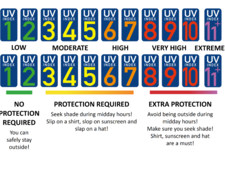-
Topics
Subnavigation
Topics
Electromagnetic fields
- What are electromagnetic fields?
- High-frequency fields
- Radiation protection in mobile communication
- Static and low-frequency fields
- Radiation protection relating to the expansion of the national grid
- Radiation protection in electromobility
- The Competence Centre for Electromagnetic Fields
Optical radiation
- What is optical radiation?
- UV radiation
- Visible light
- Infrared radiation
- Application in medicine and wellness
- Application in daily life and technology
Ionising radiation
- What is ionising radiation?
- Radioactivity in the environment
- Applications in medicine
- Applications in daily life and in technology
- Radioactive radiation sources in Germany
- Register high-level radioactive radiation sources
- Type approval procedure
- Items claiming to provide beneficial effects of radiation
- Cabin luggage security checks
- Radioactive materials in watches
- Ionisation smoke detectors (ISM)
- Radiation effects
- What are the effects of radiation?
- Effects of selected radioactive materials
- Consequences of a radiation accident
- Cancer and leukaemia
- Hereditary radiation damage
- Individual radiosensitivity
- Epidemiology of radiation-induced diseases
- Ionising radiation: positive effects?
- Radiation protection
- Nuclear accident management
- Service offers
-
The BfS
Subnavigation
The BfS
- Working at the BfS
- About us
- Science and research
- Laws and regulations
- Radiation Protection Act
- Ordinance on Protection against the Harmful Effects of Ionising Radiation
- Ordinance on Protection against the Harmful Effects of Non-ionising Radiation in Human Applications (NiSV)
- Frequently applied legal provisions
- Dose coefficients to calculate radiation exposure
- Links
UV forecast
- UV index forecasts are issued every 3 days each year from April to September by the BfS, in cooperation with the Federal Environment Agency, Germany's National Meteorological Service (DWD) and other associated institutions. The forecasts are based on the previous measurement data of the UV monitoring network and actual meteorological data.
- If two values are indicated for the UV index the lower value applies for the predicted cloudiness, the higher one for bright sunshine.
- The higher the UV index value the less time it takes for sunburn to occur on unprotected skin.
The UV Index describes the expected daily peak level of the erythemally weighted UV irradiance at ground level. The higher the UV Index, the higher the UV irradiance and the faster a sunburn can occur when skin is not protected. Sun protection measures have to be taken according to the UV index.
UV index forecasts for the ten forecast areas in Germany are issued every 3 days each year from April to September by BfS, in cooperation with the Federal Environment Agency, Germany's National Meteorological Service and other associated institutions. The forecasts are based on the previous measurement data of the UV monitoring network and actual meteorological data provided by the DWD.
The intensity of the UV radiation depends on the cloud coverage. If the cloud coverage decreased contrary to the weather forecast the predicted UV index would be too low. Therefore two UV index values are indicated if cloudiness is predicted. The lower value applies for the predicted cloudiness, the higher one for bright sunshine.








